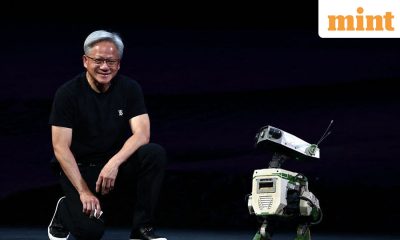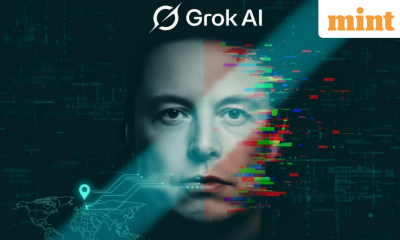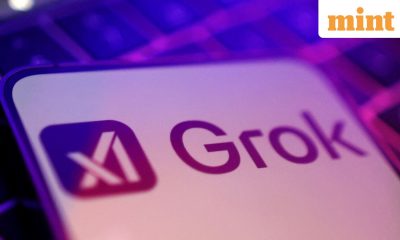

Metaverse
What are the chances of an AI apocalypse? – Crypto News
These days, worries about “existential risks”—those that pose a threat to humanity as a species, rather than to individuals—are not confined to military scientists. Nuclear war; nuclear winter; plagues (whether natural, like covid-19, or engineered); asteroid strikes and more could all wipe out most or all of the human race. The newest doomsday threat is artificial intelligence (ai). In May a group of luminaries in the field signed a one-sentence open letter stating: “Mitigating the risk of extinction from AI should be a global priority alongside other societal-scale risks such as pandemics and nuclear war.”
But just how worried is it rational to be? On July 10th a group of researchers, including Ezra Karger, an economist at the Federal Reserve Bank of Chicago, and Philip Tetlock, a political scientist at the University of Pennsylvania, published a working paper that tries to shed light on that question by systematically surveying two different kinds of experts. On the one hand were subject-matter, or “domain”, experts in nuclear war, bio-weapons, AI and even extinction itself. On the other were a group of “superforecasters”—general-purpose prognosticators with a proven record of making Accurate predictions on all sorts of topics, from election results to the outbreak of wars.
We will all go together when we go
The researchers recruited 89 superforecasters, 65 domain experts and 15 experts in “extinction risk” more generally. The assembled seers were given two different kinds of disaster to consider. A “catastrophe” was defined as something that killed a mere 10% of the humans. in the world, or around 800m people. (The second world war, by way of comparison, is estimated to have killed about 3% of the world’s population of 2bn at the time.) An “extinction”, on the other hand, was defined as an event that wiped out everyone with the possible exception of, at most, 5,000 lucky (or unlucky) souls.
The two groups were asked to provide forecasts on the likelihood of everything from terminal events like an AI-caused extinction or a nuclear war to smaller questions, such as whether worrying advances in the abilities of AIs might come to pass, serving as signposts on the road to a future disaster.
View Full Image
The headline conclusion of the study was that domain experts, who tend to dominate public conversations around existential risks, appear to be much gloomier than the superforecasters (see chart). The experts reckoned there was about a 20% chance of a catastrophe by 2100, and a 6% chance of extinction. The superforecasters gave those events probabilities of 9% and 1% each.
That broad split disguised some interesting details. The difference between the two groups was greatest when considering the risks posed by AI. The median superforecaster reckoned there was a 2.1% chance of an AI-caused catastrophe, and a 0.38% chance of an AI-caused extinction, by the end of the century. AI experts, by contrast, assigned the two events a 12% and 3% chance, respectively. When it came to pandemics, superforecasters were more pessimistic than domain experts on the risks posed by naturally-occurring disease.
Perhaps the most interesting result was that, although the groups disagreed on the exact size of the risk, both groups pegged nuclear war and AI as much bigger worries than anything else. One reason for AI’s strong showing, says Dan Maryland, a superforecaster who participated in the study, is that it acts as a “force multiplier” on other risks like nuclear weapons. As with nuclear war or an asteroid strike, AI (in the form of armed robots, say) could conceivably kill humans directly. But it could also serve to sharpen another executioner’s axe, as it were. If humans used AI to help design more potent bioweapons, for instance, it would have contributed fundamentally, albeit indirectly, To the disaster.
But while the superforecasters were pessimistic about AI, they were also relatively uncertain about it. The world has lived with nuclear weapons for nearly 80 years. That a nuclear war has not yet happened constitutes valuable data that can be fed into forecasts of whether it might happen in future. AI, at least in the current meaning of the term, is much newer. The emergence of modern, powerful machine-learning models dates to the early years of the 2010s. And the field is still developing rapidly. That leaves much less data on which to base predictions.
But Dr Tetlock in particular has done a great deal of work over the years looking at the problem of predicting the future. It was he who first identified and named the “superforecasters”, people who seemed to be unusually good at predicting the future. Such people share a few characteristics, such as careful, numerical thinking and an awareness of the cognitive biases that might lead them astray. Despite their lack of specific expertise, superforecasters have a solid record of outperforming experts in lots of other technical fields, from finance to geopolitics,
The differences between the groups seem partly to reflect differences in their models of how the world works. Catastrophic risks depend not just on how sophisticated or powerful a technology gets, but how humans react to it. After scares in the early cold war, for example, America and the Soviet Union, the world’s two biggest nuclear powers, began to co-operate. Initiatives like a Moscow-Washington “hotline”, agreements to inspect each others’ weapons and treaties designed to limit the sizes of stockpiles all helped to cut the risk of nuclear war.
But superforecasters and AI experts seemed to hold very different views of how societies might respond to small-scale damage caused by AI. Superforecasters tended to think that would prompt heavy scrutiny and regulation to head off bigger problems later. Domain experts, by contrast, tended to think that commercial and geopolitical incentives might outweigh concerns about safety, even after real harm had been caused.
Superforecasters and experts also had different views on the limits of intelligence. Kjirste Morrell, another superforecaster involved in the study, puts it simply: “It’s just not easy to kill everybody.” Doing so, she points out, probably requires “a certain amount of ability to interact with the physical world…you probably need a lot of advancement in robotics before you get to that.”
Reading the runes
The fundamental problem with this sort of prediction, of course, is that unlike with repeated, lower-stakes events (such as predicting the movements of share prices, or the outcome of elections) there will never be any way to know which side is closer. to identifying the true level of risk. But if the superforecasters are so good at predictions, and experts have so much topic-specific knowledge, you might at least expect the two groups to influence each other’s beliefs.
The study tried to encourage such “persuasion” through group discussions, monetary incentives for better arguments and more. Nevertheless, and perhaps surprisingly, both sides stuck resolutely to their guns. (One AI expert fingered “deliberation fatigue” as the problem—in other words, both sides were simply exhausted from all the forecasting they had already been asked to do.)
Changing minds, or “updating priors”, as the forecasters put it, might be easier with new evidence. So Drs Karger and Tetlock are hoping to collect exactly this. They have asked participants in the current study to answer questions about a series of “ early-warning indicators”—measures that would suggest whether the world is on a path toward one catastrophic scenario or another. The amount of computer power used in large AI training runs might serve to track the general progress of the field, for instance. The eventual fate of nuclear arms-control treaties might be another factor. The hope is that these shorter-run questions, some of which will be resolved by 2024 and 2030, will provide a sense of whose predictions to take more seriously—and therefore, how worried you should be.
© 2023, The Economist Newspaper Limited. All rights reserved. From The Economist, published under license. The original content can be found on www.economist.com
-

 others1 week ago
others1 week ago228,876 Americans Warned After Hackers Hit Financial Firm – Names, Social Security Numbers and More Potentially Exposed – Crypto News
-
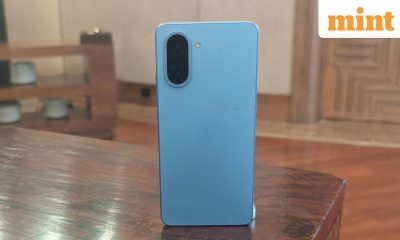
 Technology1 week ago
Technology1 week agoBest phones under ₹25,000 you can buy before the New Year: OnePlus Nord CE 5, Realme P3 Ultra and more – Crypto News
-

 Technology1 week ago
Technology1 week agoiPhone 17 Pro Max gets over ₹11,000 discount ahead of New Year: how to grab the deal – Crypto News
-
Business5 days ago
Coinbase CEO Outlines 2026 Vision: All-in-One Exchange in Priority – Crypto News
-
others7 days ago
Dogeball’s Live Testnet Gains Traction Ahead of Its Presale Launch – Crypto News
-
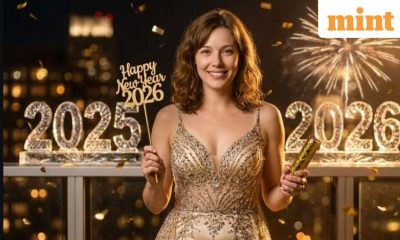
 Technology7 days ago
Technology7 days agoNew Year 2026 cinematic portraits made easy: 5 Top AI prompts for ChatGPT, Gemini, and Grok – Crypto News
-
Business5 days ago
Coinbase CEO Outlines 2026 Vision: All-in-One Exchange in Priority – Crypto News
-

 Metaverse1 week ago
Metaverse1 week agoLaw firms prep for a deeper AI integration in 2026 as it enters workflows – Crypto News
-

 Metaverse1 week ago
Metaverse1 week agoLaw firms prep for a deeper AI integration in 2026 as it enters workflows – Crypto News
-

 others5 days ago
others5 days agoApple CEO Pours $2,940,000 Into Stock That Billionaire Paul Tudor Jones Has Placed Massive Bullish Bet On – Crypto News
-

 others1 week ago
others1 week agoBig Rotation Into Bitcoin Incoming As BTC-Gold Ratio Flashes Bullish Reversal Signal: Michaël van de Poppe – Crypto News
-

 Cryptocurrency5 days ago
Cryptocurrency5 days agoBitcoin Dominance Logs Rapid Plunge as XRP, SHIB, and Other Altcoins Surge – Crypto News
-

 Technology1 week ago
Technology1 week agoGoogle Photos set to arrive on Samsung AI TVs with new smart viewing features: All you need to know – Crypto News
-

 Blockchain1 week ago
Blockchain1 week agoRezolve Debuts Revenue Pools to Support Blockchain – Crypto News
-

 others1 week ago
others1 week agoUSD/INR opens flat near 90.20 on last trading day of 2025 – Crypto News
-
Business5 days ago
Coinbase CEO Outlines 2026 Vision: All-in-One Exchange in Priority – Crypto News
-

 Blockchain1 week ago
Blockchain1 week agoGalaxy Digital Explains The Setup – Crypto News
-

 Blockchain1 week ago
Blockchain1 week agoGold and Bonds Take the Lead – Crypto News
-

 Cryptocurrency1 week ago
Cryptocurrency1 week agoCrypto Goes to Hollywood – Decrypt – Crypto News
-
Technology5 days ago
Dogeball ICO Begins January 2 as the Project Prepares for Its 2026 Roadmap – Crypto News
-
Business4 days ago
Top Gainers of the Week: MYX, PEPE, CC Lead Market Gains as as Bitcoin Rallies To $90k – Crypto News
-

 Technology1 week ago
Technology1 week agoBharat Taxi to launch nationwide on January 1, 2026: here’s everything you need to know – Crypto News
-

 Cryptocurrency1 week ago
Cryptocurrency1 week agoBitcoin Price Below $90K: A Healthy Correction or Brewing Trouble? – Crypto News
-

 Blockchain1 week ago
Blockchain1 week agoKey Catalyst For Potential Surge Toward $150,000 Next Year – Crypto News
-

 Blockchain1 week ago
Blockchain1 week agoGold and Bonds Take the Lead – Crypto News
-

 Cryptocurrency1 week ago
Cryptocurrency1 week agoWhat to Expect After the Latest Fed Rate Cut – Crypto News
-
others1 week ago
Why Are Crypto Prices Surging on the Last Day of 2025? – Crypto News
-
Cryptocurrency1 week ago
Bitcoin Price Prediction Ahead of FOMC Minutes – Crypto News
-
Technology1 week ago
Bitcoin Price Prediction Ahead of FOMC Minutes – Crypto News
-

 Cryptocurrency1 week ago
Cryptocurrency1 week agoDavid Beckham–backed Prenetics abandons Bitcoin strategy to focus on core health business – Crypto News
-

 Blockchain1 week ago
Blockchain1 week agoBitcoin Enters Decision Phase, But What Does It Mean For The Crypto Market? – Crypto News
-

 Cryptocurrency7 days ago
Cryptocurrency7 days agoBitwise Files for 11 Altcoin ETFs Targeting AAVE, UNI, SUI, More – Crypto News
-

 Cryptocurrency7 days ago
Cryptocurrency7 days agoFrom Bybit to Coinbase: 2025’s Biggest Crypto Hacks and Breaches – Crypto News
-

 others7 days ago
others7 days agoBreaking down the trendline shift and resistance ahead – Crypto News
-
Technology6 days ago
Bitcoin Treasury News: Tether Boosts Holdings by 8,888 BTC Despite Market Volatility – Crypto News
-

 others5 days ago
others5 days agoEUR/USD extends mild losses in a calm start to the year – Crypto News
-
Business5 days ago
Why is PEPE Coin Rising Today (Jan 2) – Crypto News
-
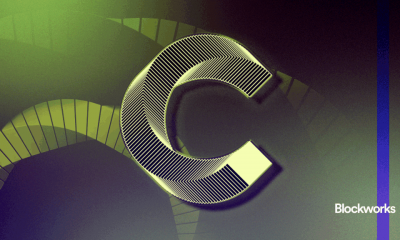
 Cryptocurrency5 days ago
Cryptocurrency5 days agoCanton’s $6T RWA rails and Lighter’s Hyperliquid multiple – Crypto News
-
others5 days ago
Dogecoin Price Jumps 10% as Whales Scoop Up 220M DOGE; What’s Next? – Crypto News
-
others5 days ago
Analyst Predicts Cardano Price to Surge 103% to $0.75 as Midnight, Leios Launch Near – Crypto News
-

 Blockchain5 days ago
Blockchain5 days agoXRP Enters A Make-or-Break Zone As This Long-Term Support Cracks – Crypto News
-

 Technology5 days ago
Technology5 days agoWhat to Stream: Kid Laroi, The Pitt and Tron: Ares – Crypto News
-
others1 week ago
United States Initial Jobless Claims came in at 214K, below expectations (223K) in December 19 – Crypto News
-

 Metaverse1 week ago
Metaverse1 week agoWhy Bernie Sanders is targeting ‘richest people in the world’ over AI boom? – Crypto News
-

 Cryptocurrency1 week ago
Cryptocurrency1 week agoAnother week, another MetaDAO advertisement – Crypto News
-
others1 week ago
DOGEBALL Launches as the World’s First Layer-2 Powered Crypto Game – Crypto News
-
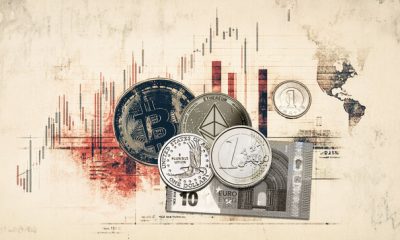
 others1 week ago
others1 week agoUSD/JPY stalls as year-end volumes evaporate, Yentervention risk looms – Crypto News
-

 Blockchain1 week ago
Blockchain1 week agoPrivacy Coins Outperform as Crypto Investors Turn Defensive – Crypto News
-
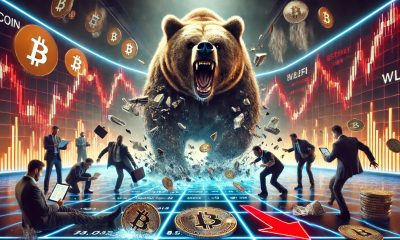
 Blockchain1 week ago
Blockchain1 week agoCould A Bitcoin Drop To $74,000 Spell Bankruptcy For Strategy? Top Analysts Respond – Crypto News
-

 others1 week ago
others1 week agoRobinhood CIO Reveals Firm’s 2026 Stock Market Outlook – Here’s the S&P 500 Price Target – Crypto News









